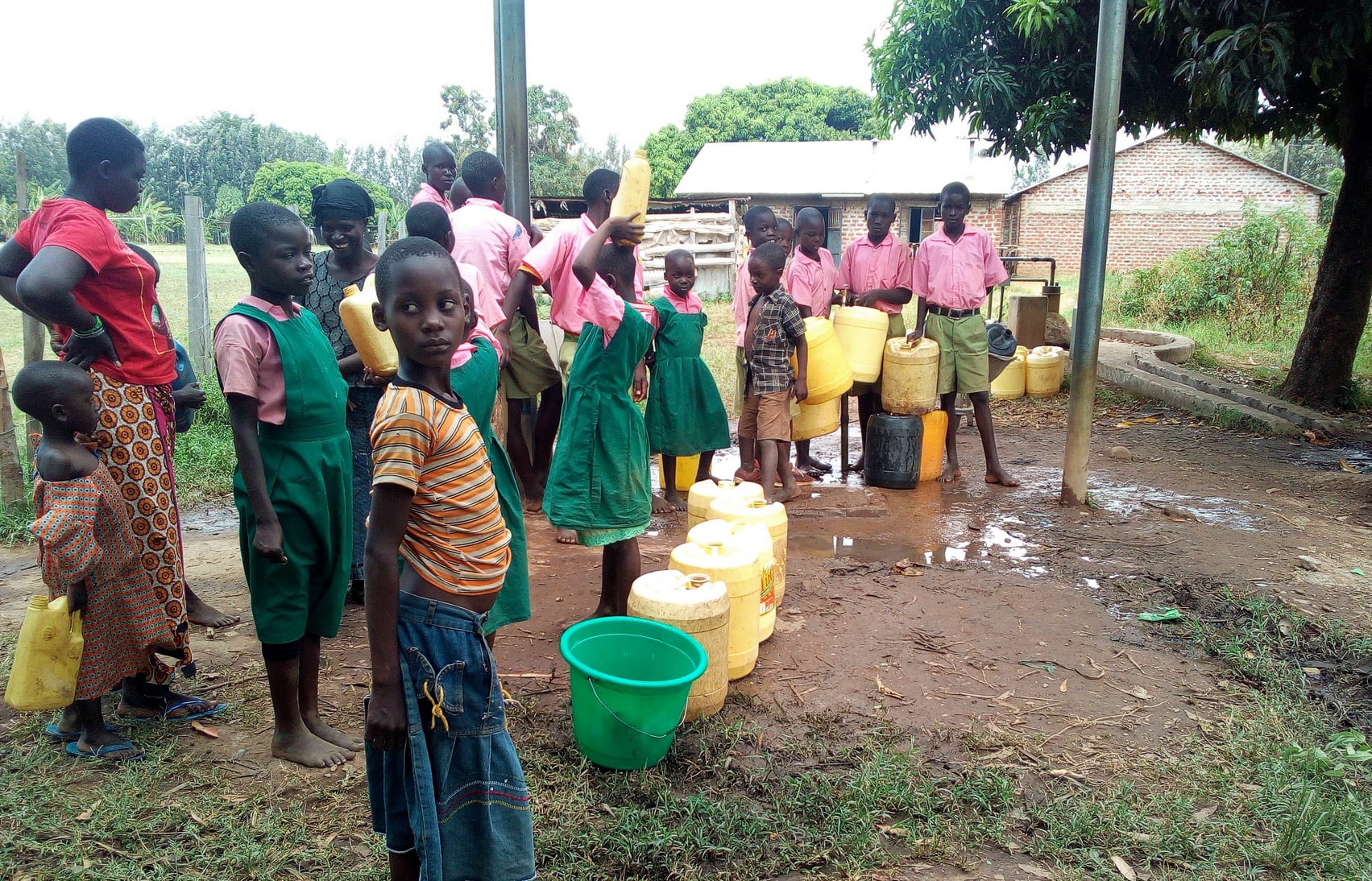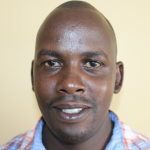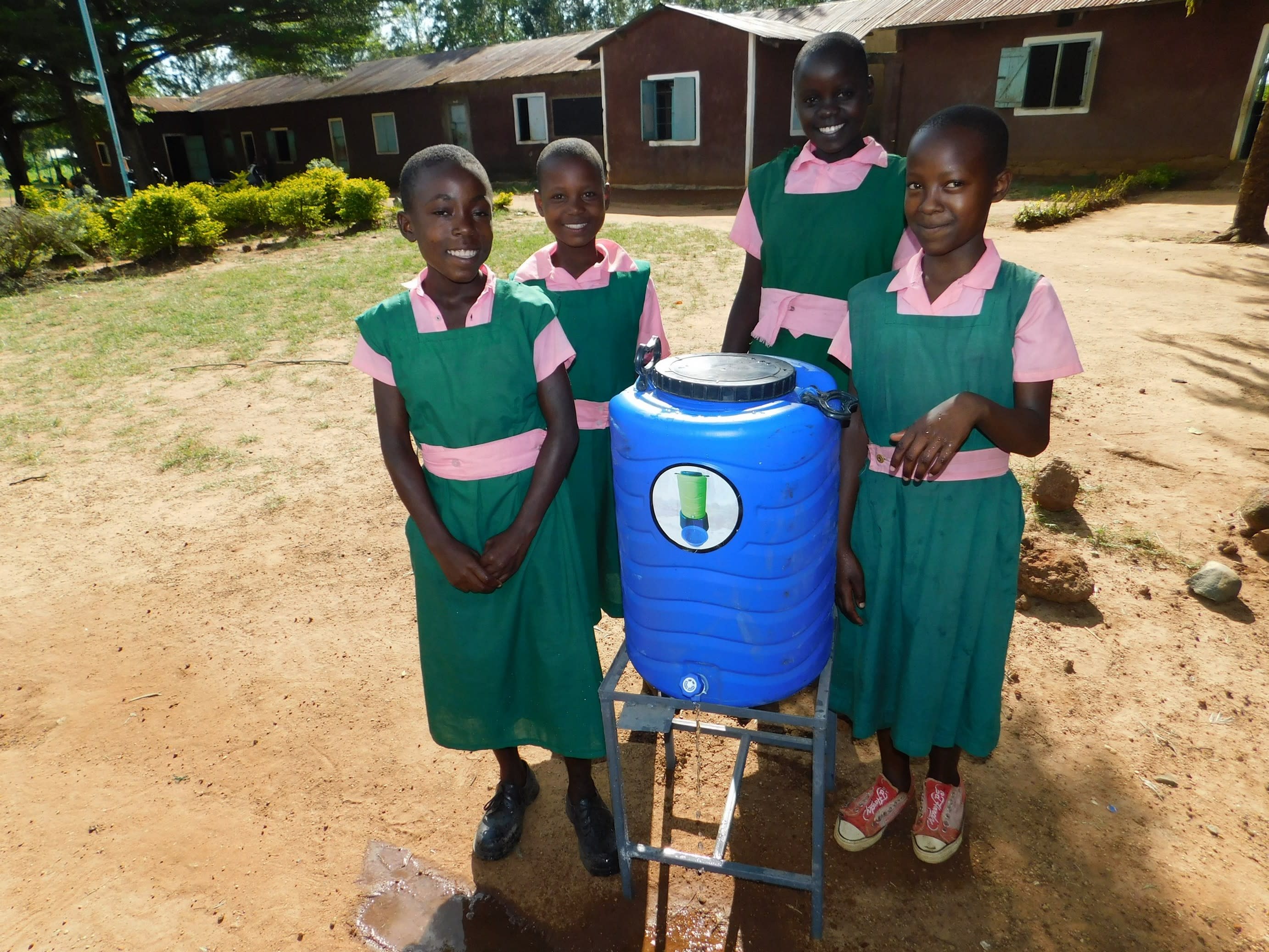Mukhweya Primary School has been open for over 70 years. It's consistently grown to have 14 classrooms and staff offices that host 746 students, 13 teachers, and three support staff.
Mukhweya Primary School does not have its own water source. Students must walk to the nearby secondary school to get water from their borehole. Unfortunately, these primary students not only wait in line behind the older secondary students but behind community members as well. This well is open to the entire community, so hundreds rely on it for water! This is a very overused water source. The primary students waste so much class time waiting in line for the water they need.

Everyone reports that the more the borehole is used, the dirtier the water becomes.
"Due to the large number of users at the borehole, clean water is quite limited. At times, people are forced to fetch the dirty water at the bottom of the borehole to avoid missing this water entirely. This results in numerous cases of stomach upsets and diarrhea, which translates to high medical costs hence constraint of financial resources," said Headteacher Kucho.
The available pit latrines are almost full and very smelly. This is because cleaning is not done on a regular schedule due to water scarcity at the school.
These primary students would greatly benefit from having a way to collect and store water of their own.
What we can do:
Training
Training on good hygiene habits will be held for two days. The facilitator will use PHAST (participatory hygiene and sanitation transformation), ABCD (asset-based community development), CTC (child to child), lectures, group discussions, and handouts to teach health topics and ways to promote good practices within the school. The CTC method will prepare students to lead other students into healthy habits, as well as kickstart a CTC club for the school.
They need training on proper water handling, storage, treatment, food handling, latrine cleanliness, handwashing, and many other topics.
Handwashing Stations
"We really urge you to consider our school for additional sanitation facilities. Sanitation facilities, as you have seen, are so wanting. More so, we don't have even a single handwashing station where our pupils can wash their hands after visiting the few available pit latrines," said Headteacher Kucho.
We will deliver two handwashing stations to the school, and the club will fill them with water on a daily basis and make sure there is always a cleaning agent such as soap or ash.
VIP Latrines
Two triple-door latrines will be constructed with local materials that the school will help gather. Three doors will serve the girls while the other three serve the boys. And with a new source of water on school grounds, students and staff should have enough to keep these new latrines clean.
Rainwater Catchment Tank
Mukhweya Primary School is one of the schools in Kakamega County that is sometimes misidentified as a Bungoma County school. It is only a walking distance to Bungoma County, and some of the pupils cross the border to attend here. The school sometimes misses resource allocation from the county government because of its location. The school records good performance in the county through the school is encountering so many challenges ranging from insufficient facilities to old infrastructure. Blessing this school with these new facilities will improve the school a lot.
Pupils will have access to safe, clean water for drinking and cleanliness. Wasted time queuing for water will be eliminated.
We and the school strongly believe that with this assistance, standards will significantly improve. These higher standards will translate to better academic performance!

 Rainwater Catchment
Rainwater Catchment
 Rehabilitation Project
Rehabilitation Project











































